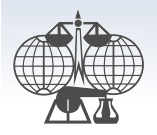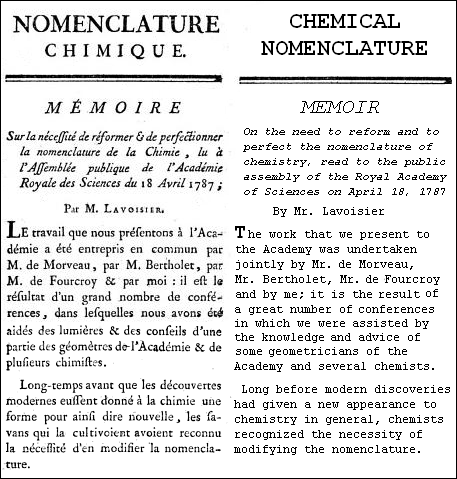International Union of Pure and Applied Chemistry
The International Union of Pure and Applied Chemistry (IUPAC) is a non-governmental scientific organization serving to advance all aspects of the chemical sciences and to contribute to the international application of chemistry by scientists, engineers and others. It is an association of organizations, called "National Adhering Organizations," which represent the chemists of different member countries. As of July 2009, there are 54 "National Adhering Organizations" plus some other countries that are linked to IUPAC as "Associate National Adhering Organizations".[1][2]
The U. S. National Academy of Sciences is the U.S. National Committee for the International Union of Pure and Applied Chemistry (i.e., the IUPAC's National Adhering Organization for the United States of America).[3]
The international headquarters office of the IUPAC is located in Zurich, Switzerland. The administrative office, known as the "IUPAC Secretariat" and headed by the IUPAC executive director, is located in Research Triangle Park, North Carolina (U.S. state), United States of America.[1]
History
In 1782, the French chemist Louis-Bernard Guyton de Morveau published recommendations for the nomenclature of chemicals.[4] His system was later refined in collaboration with Antoine-Laurent Lavoisier, Claude Louis Berthollet and other French chemists.[5] Their work was also supported by the Swedish chemist Jöns Jakob Berzelius.[6][7]
Guyton de Morveau's recommendations covered only what today we refer to as inorganic compounds. With the massive expansion of organic chemistry in the mid-nineteenth century and the greater understanding of the structure of organic compounds, the need for a better system of nomenclature was felt. An international conference was convened in Geneva in 1892 by various European national chemical societies, from which the first widely accepted proposals for standardization arose.[8]
In 1911, the International Association of Chemical Societies (IACS) met in Paris and produced a set of proposals for standardization of chemical nomenclature, physical constants and physical properties that the association should address.[9] A commission of the association was set up for that purpose in 1913 but its work was interrupted by World War I. After the war, in 1919, chemists from academia and industry formed the International Union of Pure and Applied Chemistry (IUPAC) and the task of standardization was passed to them. The IUPAC first appointed commissions for organic, inorganic and biochemical nomenclature in 1921 and continues to do so to this day.[10]
Divisions of the IUPAC
The IUPAC has eight divisions and three operational committees. About 1000 chemists throughout the world are participating on a voluntary basis in the scientific work of IUPAC, primarily through specific projects being performed by the divisions and committees.[9] These are the eight divisions:
|
|
The three operational committees are:
- Chemical Research Applied to World Needs (CHEMRAWN)
- Committee on Chemistry Education (CEC)
- Committee on Chemistry and Industry (CCOCI)
There is also a "Joint Commission on Biochemical Nomenclature" between the IUPAC and the International Union of Biochemistry and Molecular Biology (IUBMB) referred to as the JCBN.
The IUPAC's nomenclature books
IUPAC's nomenclature books are used by chemists in academia, government and chemical industry throughout the world:[11]
General:
- Principles of Chemical Nomenclature: a Guide to IUPAC Recommendations, Leigh, G.J., Favre, H.A. and Metanomski, W.V., Blackwell Science, 1998, ISBN 0-86542-6856 (Also available in a French language version)
The color books:
- The Gold Book: Compendium of Chemical Terminology, 2nd Edition, McNaught, A.D. and Wilkinson, A., Blackwell Science, 1997, ISBN 0-86542-6848 (Also available in French, Spanish and Polish language versions)
- The Green Book: Quantities, Units and Symbols in Physical Chemistry, 3rd Edition, Cohen, E.R., Cvitaš, T., Frey, J.G. , Holmström, B., Kuchitsu, K., Marquardt, R., Mills, I., Pavese, F., Quack, M., Stohner, J., Strauss, H.L., Takami, M. and Thor, A.J., RSC Publishing, 2007, ISBN 0-85404-433-7 (Also available in Spanish and Catalan language versions)
- The Red Book: Nomenclature of Inorganic Chemistry - IUPAC Recommendations 2005, Connelly, N.G, Damhus, T., Hartshorn, R.M., and Hutton, A.T., The Royal Society of Chemistry, 2005, ISBN 0-85404-438-8 (Also available in Hungarian, Spanish and Catalan language versions)
- The Blue Book: A Guide to IUPAC Nomenclature of Organic Compounds (recommendations 1993), Panico, R., Powell, W.H. and Richer, J-C., Blackwell Science, 1993, ISBN 0-63203-4882 Corrections published in Pure Appl. Chem., Vol. 71, No. 7, pp.1327-1330, 1999. (Also available in Dutch, Czech, Portuguese, Croatian and Catalan language versions)
- The Purple Book: Compendium of Macromolecular Nomenclature, 1st Edition, Metanomski, W.V., Blackwell Science, 1991, ISBN 0-63202-8475 (Various full and partial translations into a number of other languages are available)[12]
- The Orange Book: Compendium of Analytical Nomenclature (definitive rules 1997), 3rd edition, Inczedy, J., Lengyel, T. and Ure, A.M., Blackwell Science, 1998, ISBN 0-86542-6155 (Also available in a Catalan language version)
- The Silver Book: Compendium of Terminology and Nomenclature of Properties in Clinical Laboratory Sciences (recommendations 1995), Rigg, J.C., Brown, S.S., Dybkaer, R. and Olesen, H., Blackwell Science, 1995, ISBN 0-86542-6120
- The White Book: Biochemical Nomenclature and Related Documents, 2nd Edition, Liébecq, C., Joint Commission on Biochemical Nomenclature (JCBN), Portland Press, 1992, ISBN 1-85578-005-4
The IUPAC's journals
Chemistry International - The news magazine of IUPAC is published bimonthly to keep readers informed about IUPAC's activities.
Pure and Applied Chemistry - The IUPAC's official journal is published monthly and contains recommendations, reports, and lectures from symposia.
Macromolecular Symposia - Published by Wiley-VCH with normally 14 issues per year. Presents contributions in the field of macromolecular chemistry and physics from selected international meetings sponsored by IUPAC, the European Polymer Federation (EPF), the American Chemical Society (ACS) and the Society of Polymer Science, Japan (SPSJ).
Solubility Data Series - This series is published in issues of the Journal of Physical and Chemical Reference Data (JPCRD)which is published by the American Institute of Physics (AIP) for the National Institute of Standards and Technology (NIST). Content is published online daily and collected into quarterly online and printed issues four times a year.
Standards
IUPAC develops and publishes definitive and up-to-date data on atomic weights and isotopic abundances. It also publishes a wide variety of other chemical data of value to chemists and chemical engineers. For example:[9]
- Thermodynamic tables of the fluid state.
- Solubility data series, with over 70 volumes of solubility data already published.
- Stability constants, this database of metal-complex stability constants contains nearly 25,000 pieces of data.
- Enthalpies of vaporization of organic compounds.
- Thermodynamic and transport properties of alkali metals.
- Recommended reference materials for achievement of specific physicochemical properties.
- Evaluated kinetic and photochemical data for atmospheric chemistry
IUPAC is also involved in establishing standard methods for use in analytical, clinical, quality control and research laboratories.
IUPAC Congress and other meetings
The history of the Congresses sponsored by IUPAC and it predecessor (the IACS) dates back to 1894. There has been a Congress every two years except for interruptions caused by the two World Wars.[9]
Each year, IUPAC also sponsors many independently organized symposia that cover a wide range of specialized topics in chemistry. Sponsorship by IUPAC attests to the quality of the scientific program and indicates the host country,s assurance that scientists from all countries may participate.[9]
IUPAC sponsors a continuing series of conferences on "Chemical Research Applied to World Needs" (CHEMRAWN). These conferences focus on topics in chemistry that have socio-political impact, such as availability of raw materials, food chemistry, and environmental matters.[9]
References
- ↑ Jump up to: 1.0 1.1 IUPAC Council Agenda Book, July 2009]
- ↑ National Adhering Organizations From the new website of the IUPAC, accessed on February 15th, 2010.
- ↑ The U.S. National Committee for the International Union for Pure and Applied Chemistry (USNC / IUPAC).
- ↑ Louis-Bernard Guyton de Morveau (1782), J. Phys. 19: p. 310.
- ↑ Louis-Bernard Guyton de Morveau, Antoine-Laurent Lavoisier, Claude Louis Berthollet, et al. (1787), Méthode de Nomenclature Chimique, Paris: Cuchet.
- ↑ Jöns Jacob Berzelius (1811), J. Phys. 73: pp. 253-286.
- ↑ Jöns Jacob Berzelius A Guide to the Perplexed Chemist Jaime Wisniak, Chemical Engineering Department, Ben-Gurion University of the Negev, Israel, published in The Chemical Educator, December 2000, Vol. 5, No. 6, pp. 343-350
- ↑ "Congrès de nomenclature chimique, Genève 1892", Bull. Soc. Chim. Paris, Ser. 3, 7: pp. xiii-xxiv, 1892.
- ↑ Jump up to: 9.0 9.1 9.2 9.3 9.4 9.5 About IUPAC
- ↑ International Year of Chemistry - 2011, Chemistry - our life, our future Prospectus and Introduction
- ↑ IUPAC Nomenclature Books Series
- ↑ Translations of the "Compendium of Macromolecular Nomenclature"


